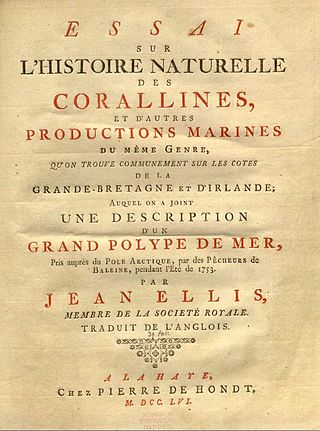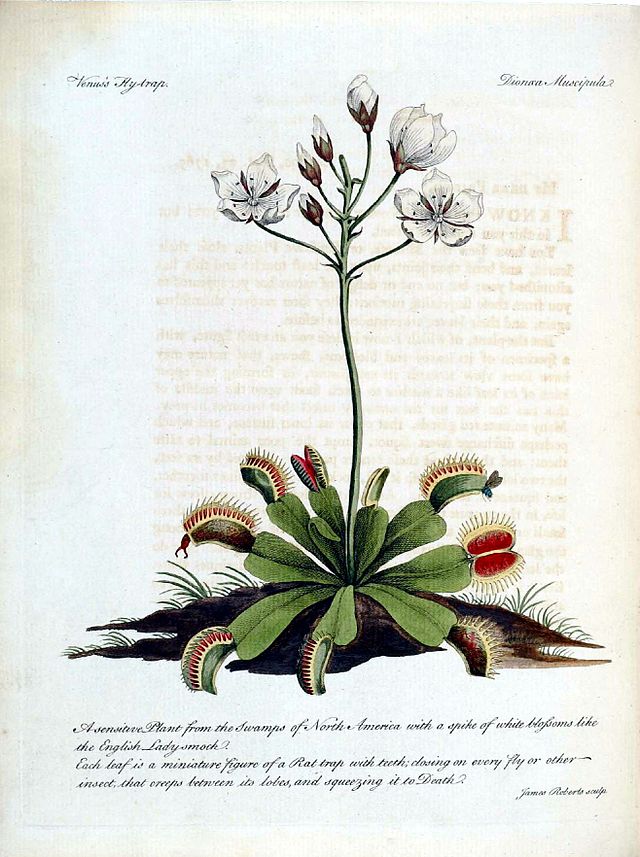Top Qs
Timeline
Chat
Perspective
John Ellis (naturalist)
British linen merchant and naturalist From Wikipedia, the free encyclopedia
Remove ads
John Ellis FRS (c. 1710 – 15 October 1776) aka Jean Ellis was a British linen merchant and naturalist. Ellis was the first to have a published written description of the Venus flytrap and its botanical name. The standard author abbreviation J.Ellis is used to indicate this person as the author when citing a botanical name.[1]
Remove ads

Title page of French translation of "Natural History of the Corallines"

Ellis specialised in the study of corals. He was elected a member of the Royal Society in 1754 and in the following year published An essay towards the Natural History of the Corallines. He was awarded the Copley Medal in 1767. In 1770 he presented papers to the Royal Society on the loblolly bay and the American star anise.[2] He was elected to the American Philosophical Society in 1774.[3] His A Natural History of Many Uncommon and Curious Zoophytes, written with Daniel Solander, was published posthumously in 1776.
Ellis was appointed Royal Agent for British West Florida in 1764, and for British Dominica in 1770.
He exported many seeds and native plants from North America to England. He corresponded with many botanists, including Carl Linnaeus.
Remove ads
Taxonomist
Venus's Fly-trap
A royal botanist, William Young imported living plants of the Venus flytrap to England. They were then shown to Ellis. In 1769, he wrote a description of the plant discovery from North Carolina to send to the 'Father of Taxonomy', Carl Linnaeus. Ellis also gave it the scientific name of Dionaea muscipula. Later, his essay Directions for bringing over seeds and plants, from the East Indies (1770) included the first illustration of a Venus Flytrap plant.[4]
Remove ads
Honours
He was honoured by having 2 plant genera named after him, Ellisia (in 1763[5] ) and Ellisiophyllum (in 1871[6]).[7]
See also
References
External links
Wikiwand - on
Seamless Wikipedia browsing. On steroids.
Remove ads
